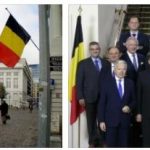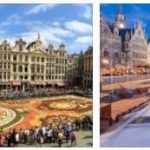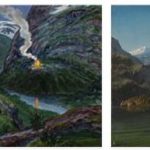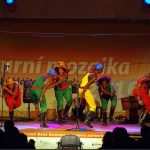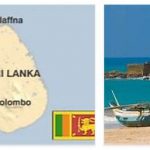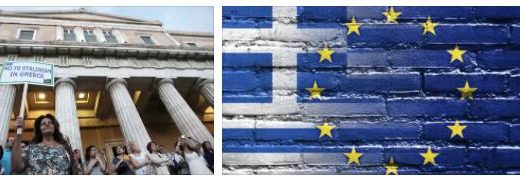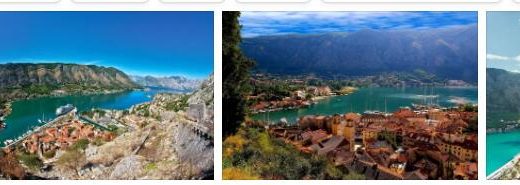Belgium Arts
For the art and architecture that from the Middle Ages took place in the countries now partly united in the Belgian ➔ Flemish state. Since the constitution of the state, Belgian art, while following a similar path to the French one, has original ways. In the first half of the 19th century. also in Brussels the dispute between classicists and romantics was bitter; the tradition of J.-A.-D. Ingres and J.-L. David is represented by FG Navez from Charleroi. Historical painting for a quarter of a century was in vogue with the public and encouraged by the authorities (G. Wappers ; E. Leys). Around 1860, freer painters inspired by a more intimate and collected vein established themselves: L. de Winne, F. Willems, J. and A. Stevens, C. Degroux, L. Dubois, C. Meunier, H. de Bracheleer, F. Rops, H. Boulenger. The vivacity of the artistic debate, in a common commitment in the rejection of tradition and academic power, is testified by the exhibitions of the Les XX circle (1883-93), which included among its founders F. Khnopff, T. van Risselberghe, G. Vogels and J. Ensor, the most impressive personality of modern Belgian art, and of the group La libre esthétique (1893-1914), flanked by the stimulating work of the critic O. Maus in the magazine L’art moderne(1881-1914). Alongside the works of Belgian artists, the exhibitions hosted the most recent and significant experiences, from Neo-Impressionism to Symbolism, which most influenced Belgian art. The symbolist poetics and the themes of art nouveau (in Belgium called Coup-de-Fouet-Stil or Paling stijl or Style des XX) transpire in the researches of W. Degouve de Nuncques, of J. Delville and in the artists who, al turn of the century, they settled in Laethem-Saint-Martin (G. van de Woestijne, A. Servaes, V. de Saedeleer, G. Minne). R. Wouter, whose sculptures show a romantic impressionist style, revealed in the paintings a chromatic strength close to the Fauves. Also in Laethem-Saint-Martin then formed, with G. de Smet, F. van den Berghe and C. Permeke, the first nucleus of Flemish expressionism, the trend that dominated the artistic scene in Belgium between the two wars, together with the surrealist current which had P. Delvaux and R. Magritte as protagonists. There was no lack of significant experiences in the field of abstract art with V. Servranckx, J. Peeters and G. Vantongerloo who worked mainly in the Netherlands and Paris.
In the immediate post-war period (1945) the Jeune peinture belge association brought together artists of different tendencies, still showing the strong heritage of Flemish expressionism and openness to currents such as the informal: G. Bertrand, L. van Lint, A. Mortier, M. Mendelson, J. Cox, A. Bonnet. The researches of J. Delahaut, J. Milo, J. Burssens and P. Bury, who in 1952 formed the group Art abstrait, Formes, refer to geometric abstraction. Surrealism, revived with authentic strength again by the works of Magritte, Delvaux and ELT Mesens, profoundly influenced the COBRA group which had C. Dotremont and P. Alechinsky among its most lively members. Between surrealism and conceptual art the works of M. Broodthaers are to be placed and the ceramics of P. Caille and the bronzes of R. d’Haese still refer to surrealism. For Belgium 2019, please check philosophynearby.com.
The path of a new figuration, in some cases with precise connections to pop art, was undertaken by R. Raveel, P. Mara, who from an early abstractionist phase came to a phantasmagoric figuration, M. Maeyer, E. Elias. V. Gentils moved from a pictorial language to the assembly of heterogeneous materials to reach a sculpture in which the figuration is expressed in a sort of three-dimensional painting; the sculptor H. van Sumere has sought pure forms, Panamarenko has developed her utopian machines that combine artistic and technological experimentation. In harmony with contemporary international experiences, the younger generations have experimented with different languages and expressive tools, while surrealism, irony, introspection and melancholy, constant characteristics of Belgian culture, often emerge in their works. In 1993 an exhibition organized by the Musées royaux des beaux-arts in Brussels, alongside mature artists such as the abstractionist R. De Keyser or M. Wéry, who in relating his painting practice to the architectural context shows a purely conceptual matrix, presented many young people who then confirmed their validity also on the international scene: G. Bijl, with ironic installations on aspects of contemporary civilization; N. Tordoir, author of monumental modular works; G. Bijl, with ironic installations on aspects of contemporary civilization; N. Tordoir, author of monumental modular works; G. Bijl, with ironic installations on aspects of contemporary civilization; N. Tordoir, author of monumental modular works; J. Fabre, protagonist of spectacular performances and author of installations; M. Droste, who worked with G. Rombouts on an original alphabet of images and colors; AV Janssens, author of videos and sculptures of light, sound and space. Among the artists welcomed in the numerous public structures dedicated to contemporary art in Brussels (even the subway stations present a significant panorama of Belgian art since 1976), Antwerp, Liège, Ghent, Louvain, to which he was added (2001-02) the Musée des arts contemporains (MAC’s), in the Grand-Hornu coal mine, still remember: M.-J. Lafontaine, who works in the field of video art ; M. Desguin, who proposes themes linked to time and memory with sculptures and installations; L. Vandevelde, whose mainly wooden sculptures represent fragments of a natural and cultural totality at the same time; Belgium Vandevijvere, whose research remains fundamentally abstract despite the suggestion of human forms and presences; and finally Group Z with M. Samyn, who has been working in the field of electronic art since 1995. In the field of comics and illustration, which have a long tradition in Belgium, alongside J.-M. Folon, François Schuiten particularly distinguished himself.


